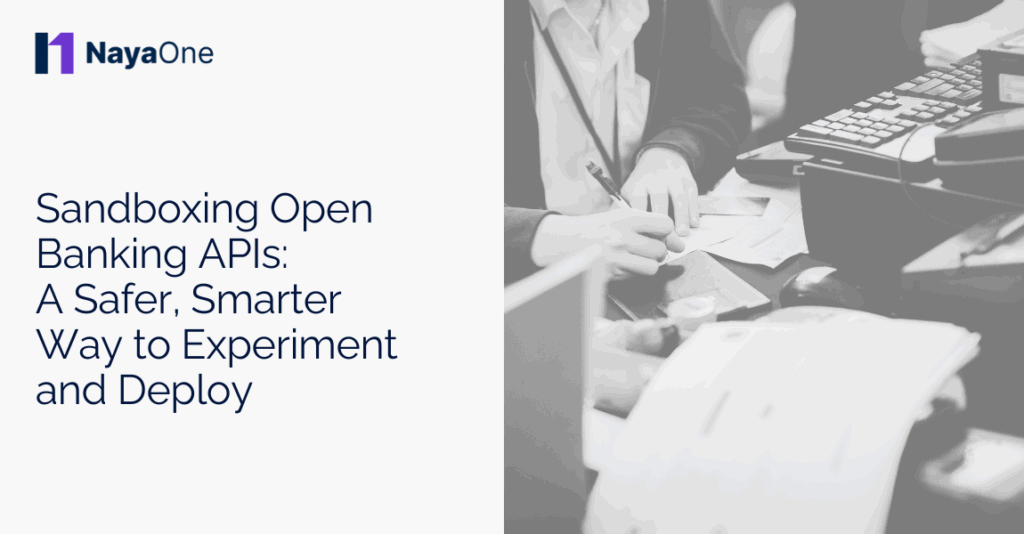Open banking APIs are often hailed as the key to financial innovation. And fair enough, they’ve opened the door to a more connected, customer-centric way of banking. Fintechs can now plug into banking infrastructure, banks can expand their offerings without reinventing the wheel, and customers can enjoy slicker, more personalised experiences. It’s a win all around… in theory.
In reality, adoption is already strong: over 70% of European banks have implemented open banking APIs, highlighting how far the concept has come and how essential it is to support this momentum with smarter tooling.
But in practice? Working with banking APIs isn’t always as seamless as it sounds. For one, they usually come with a long list of compliance requirements. You need to handle sensitive financial data. You need to test it securely. And let’s not forget that integrating with a bank’s system can feel like trying to connect a rocket to a bicycle chain.
This is where things often slow down. Innovation might start with a spark, but if you don’t have the right tools to explore and test safely, that spark fizzles out. Enter sandboxing, a way to bring ideas to life without the stress of real-world consequences. It’s like a lab for open banking without the lab coats and clipboard checklists.
So, why exactly is sandboxing such a game-changer for banking API development? Let’s get into it.
What challenges do innovators face when working with banking APIs?
First up, let’s talk about the hurdles. If you’re a developer, fintech founder, or anyone who’s ever tried to build something cool with a banking API, you probably know the feeling of being stuck in a loop.
One major issue is access. Getting permission to test with live banking APIs can be a long, bureaucratic journey. You’re dealing with strict data privacy rules, rigorous compliance checks, and, often, limited support. It’s like being handed a high-performance car and then being told you can only drive it in a supermarket car park.
Then there’s the matter of realism. Testing with fake or poorly structured data doesn’t prepare you for the complexities of a real banking environment. You might think your app works perfectly—until you plug into a production system and everything breaks.
Not to mention the risk. Nobody wants to be the person who accidentally triggered a chain reaction in a live banking system. The fear of breaking something, or even worse, leaking data, can make people overly cautious, and that slows everything down.
It’s not just anecdotal: nearly 45% of financial institutions say they’ve delayed open banking API roll‑outs due to issues around data encryption, consent frameworks or fraud protections.
Bottom line: the open banking API model is powerful, but it’s got some serious friction when it comes to innovation and speed.
How does a sandbox environment change the game?
This is where sandboxing comes into play. Think of a sandbox as a safe zone where you can try new things, break stuff, fix it again, and learn without fear. No live customers, no real money, no regulatory headaches, just freedom to build.
In the world of open banking APIs, a sandbox environment mimics the real thing. It simulates how APIs behave in the wild, complete with realistic (but fake) data, without ever putting anyone’s information at risk. You can experiment, test, and iterate without needing a full risk assessment every time you change a line of code.
Need to integrate a banking API into a budgeting app? No problem. Want to simulate what happens when a payment fails? Go for it. You can even model edge cases and stress test your product against worst-case scenarios, all without calling your legal team in a panic.
But perhaps the biggest win is speed. With sandboxing, developers can skip the red tape and get straight to building. You don’t need months of approval to start testing.
You don’t need to wait for someone in compliance to give the green light. You just dive in and start solving problems.
Who benefits most from sandboxing banking APIs?
Short answer? Pretty much everyone. But let’s break it down a bit.
Fintechs are arguably the biggest winners here. For startups and small teams, time and resources are tight. Sandboxing allows them to prototype quickly, validate ideas fast, and show proof-of-concept to partners or investors without ever touching a real account.
Banks also benefit, big time. Onboarding new third-party providers is risky if you’re working directly in a live environment. With a sandbox, banks can let partners test safely, ensure everything works smoothly, and reduce the risk of service disruptions or data mishaps. Plus, they get better visibility into what their partners are building.
Regulators might not be building apps themselves, but they still play a key role in the ecosystem. Sandboxing makes it easier for them to see how open banking APIs are being used, monitor innovation safely, and offer guidance that’s rooted in actual development realities.
And of course, end users, the customers, benefit from better products, faster. When developers have space to experiment, users get more innovative tools, quicker fixes, and smoother experiences.
So, it’s not just a tool for developers. It’s an accelerator for the entire financial ecosystem.
How is sandboxing enabling collaborative ecosystems to thrive?
Here’s where things get really interesting. Open banking isn’t just about one company doing something clever with an API. It’s about collaboration. Banks, fintechs, platforms, and regulators are all working together to create value.
Sandbox environments play a massive role in making this happen. They create a shared space where everyone can test together, iterate faster, and build with greater confidence.
Take the example of API marketplaces or innovation platforms. These aren’t just lists of open banking APIs you can browse. They’re often connected to sandbox environments, meaning you can actually try out the APIs before committing to anything. It’s a bit like test-driving multiple cars on the same track.
Platforms like NayaOne take this idea even further by providing ready-made sandbox environments where banks and fintechs can co-develop solutions, validate integrations, and collaborate on real use cases. No guesswork, no endless Zoom calls, just focused experimentation that leads to working products.
And it’s not just about speed. It’s about quality too. When developers can test with accurate data and realistic user flows, they build better products. When banks can observe how APIs are used before opening them up broadly, they manage risk more effectively. Everyone moves forward together.
That’s the power of sandboxing: it shifts banking API development from solo efforts into shared progress.
Is sandboxing the missing link in scaling open banking success?
Let’s circle back to the big picture. Open banking APIs have changed the game. They’ve created a way for financial services to be more connected, more flexible, and more customer-friendly. But without a way to test, build, and deploy safely, that promise can stall.
Sandboxing fills that gap. It gives developers room to experiment. It gives banks control and clarity. It gives regulators oversight. And it gives the whole ecosystem a way to grow together, rather than in silos.
To accelerate the adoption of open banking, NayaOne’s Vendor Delivery Infrastructure (VDI) is the solution. It provides banks and fintechs with sandbox environments that are secure, repeatable, and scalable, a crucial layer for modern digital transformation.
NayaOne play a key role in this shift by offering ready-to-use sandbox environments that bring banks and fintechs together. Instead of wrestling with fragmented systems and endless procurement cycles, teams can focus on building great financial technology and proving real value, fast.
So, is sandboxing the missing link? Maybe not the only one, but it’s definitely a crucial piece of the puzzle. If you want to scale banking API innovation without sacrificing safety, speed, or collaboration, a sandbox might just be your smartest move yet.





